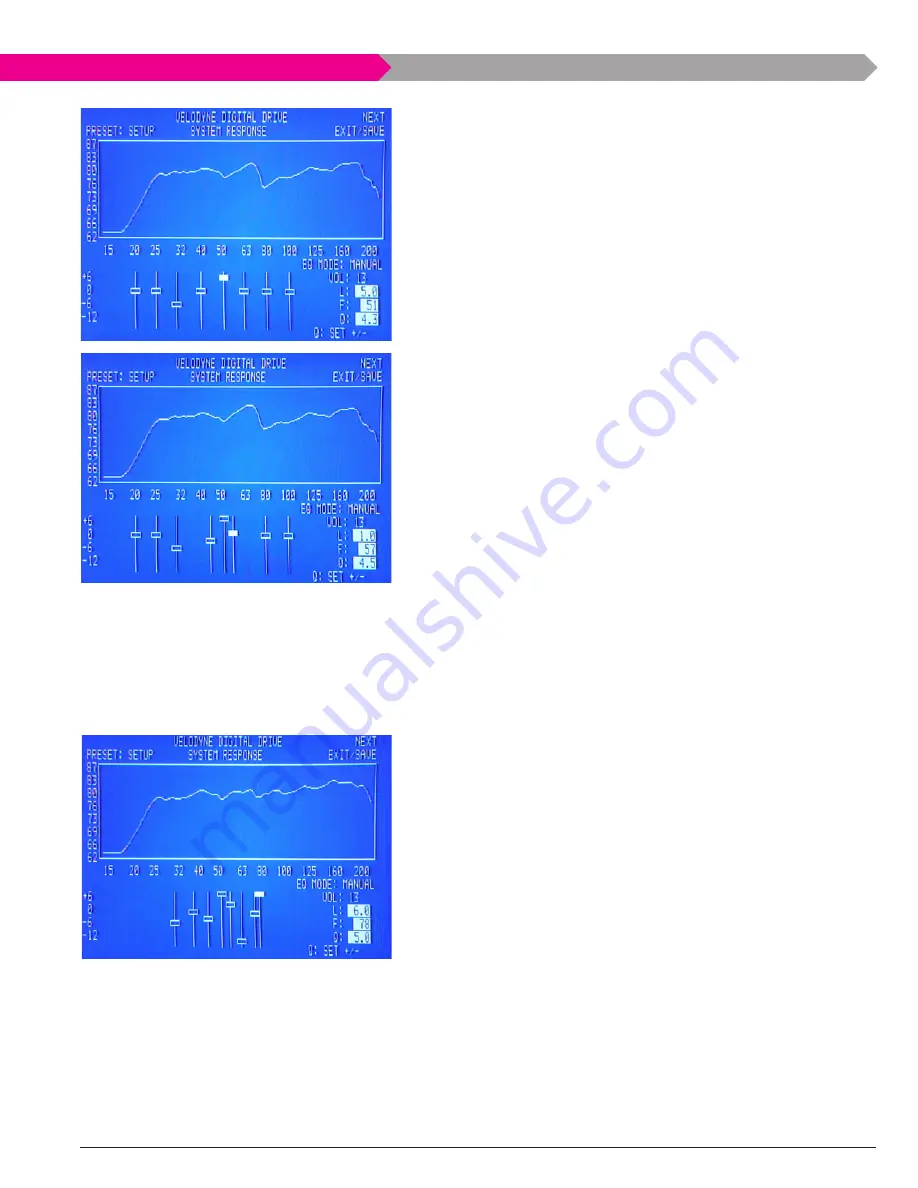
4
THE OUTLAW’S GUIDE TO THE SMS-1
As is often the case, the first attempt isn’t an ideal solution to the system
response problem. We still have a dip. A second pass at fixing it should
start to involve multiple Eq channels. In this case, we will use three chan-
nels, the fourth (40Hz), fifth (50Hz), and sixth (6Hz). The fourth Eq will
move from 40Hz to 45Hz, the level will be set to -.0db, and the q will be
raised to 5.8. The fifth Eq had already been adjusted somewhat, but will
further move to 5Hz, have the level bumped up to 6.0db, and have the
q of .. The sixth Eq will move down to 57Hz with a q of 4.5 and a slight
1.0db boost. The System response curve below shows this second pass
at fixing the 5Hz dip. There’s still a bit of dip that ties into the neighbor-
ing peak, but we’ll address that as we continue with adjustments for that
peak.
Once you have a feel for how to deal with a typical peak and a typical
dip, you can simply work your way across the response curve. Some
care needs to be taken at areas where two dips interact (using the same
reasoning applied to fixing individual dips without stacking Eq’s). Like-
wise, some restraint is advisable near the lower limit of your subwoofer’s
response. If your subwoofer is rated down to 5Hz, then you should prob-
ably not try to apply 5db of boost at 0Hz – the “dip” in response there
is most likely the natural response roll-off inherent in your subwoofer,
and boosting it will just place undue burden on the sub at a frequency
response range your subwoofer is intended to operate in.
Using the steps described above, we took the System response originally
shown at the beginning of this example and transformed it into the Sys-
tem response shown below. As you can tell, we ended up focusing our
attention between 0Hz and 80Hz. This is because the room response
below 0Hz was already fairly even up to the point where the response
of the example system’s LfM-1 subwoofer began to roll off. Likewise, the
crossover for the left and right speakers was set to 80Hz in our processor,
so the subwoofer began tapering off at that point and passing responsi-
bility back to the mains (which the SMS-1 has no control over).
In the example above, we took some effort to keep the eight Eq’s laid out
in their original order from left to right, but it is not necessary to do so.
The SMS-1 will allow any Eq channel to be set to any frequency, regardless
of where other channels are set. This means that even though the first
Eq channel defaults to 0Hz, it can be set to 10Hz. The only drawback
to doing this is the fact that the SMS-1 will continue to scroll through the
eight Eq channels in their original order, so that if you have moved the
first Eq to 75Hz (between the default positions for the sixth and seventh
Eq’s) you would have to scroll all the way “down” past the fifth through
second Eq channels to get to the first to make adjustments. It will work
just fine, but it can be very confusing if you have forgotten what order
the Eq’s are in and are trying to make adjustments later. bottom line: if
your cursor seems to be skipping around between the Eq’s randomly, it is
probably because the channels are no longer in their original order.










































